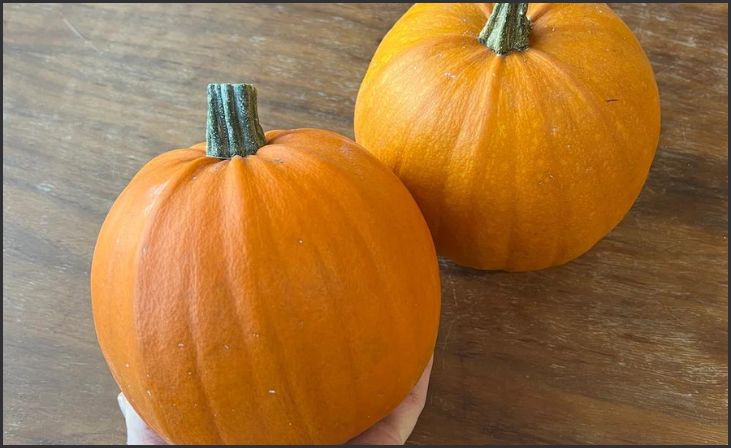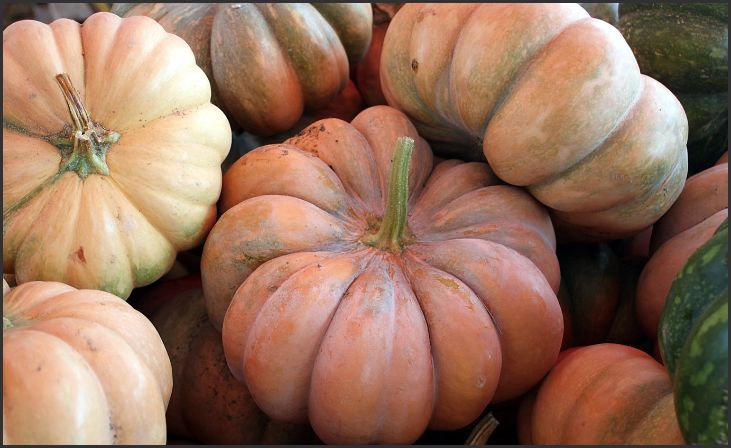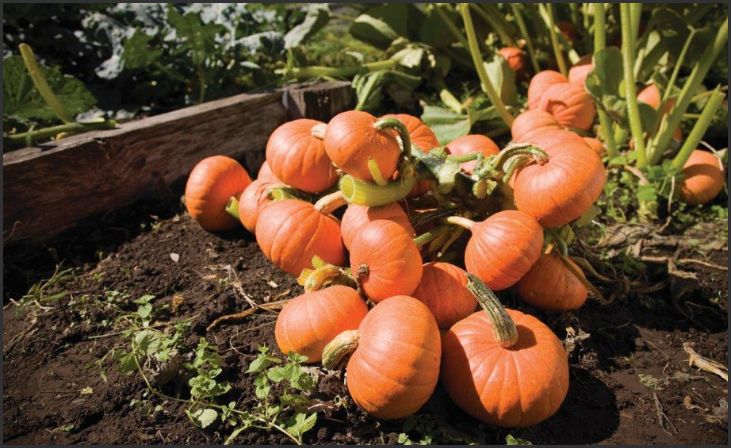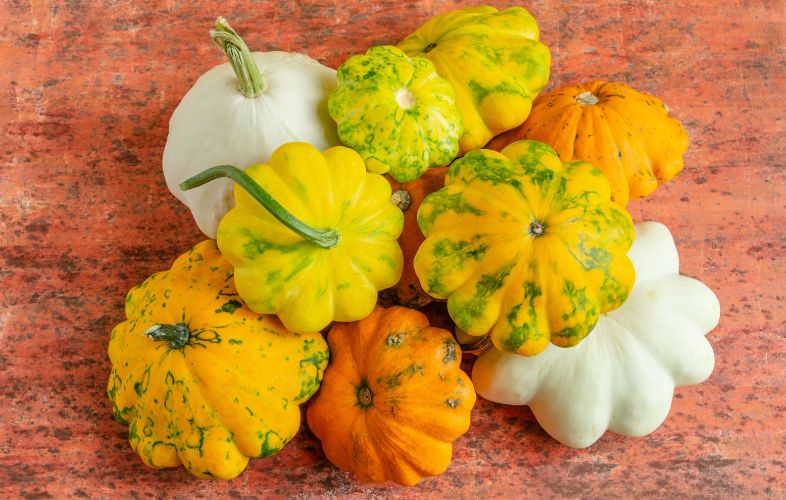Selecting the right pumpkin is crucial for crafting the perfect homemade pie. Beyond mere aesthetics, the choice of pumpkin variety significantly influences the flavor, texture, and overall quality of the final dessert.
This guide explores the characteristics of ideal pumpkin varieties, emphasizing factors such as sweetness, texture, and flavor. We delve into popular pumpkin varieties renowned for their suitability in pie-making, including the Sugar Pie Pumpkin, Cinderella Pumpkin, and Long Island Cheese Pumpkin.
Additionally, we provide insights into growing and selecting pumpkins, along with tips for proper storage and preservation methods.
Whether you’re a seasoned baker or a pie enthusiast, this comprehensive overview aims to enhance your understanding and appreciation of the diverse pumpkin varieties available, empowering you to create delectable homemade pies with confidence and culinary finesse.
Sugar Pie Pumpkin

Sugar Pie Pumpkin is the quintessential choice for homemade pies. Its small, round form harbors a sweet and smooth orange flesh, making it the ideal pumpkin for baking. Renowned for its baking qualities, this variety elevates the flavor and texture of pumpkin pies.
The compact size of the Sugar Pie Pumpkin ensures convenience, while its rich taste enhances the overall deliciousness of your favorite fall treats.
Also, Read – Pumpkin spice latte recipes at home
Cinderella Pumpkin
Cinderella Pumpkin, also known as Rouge Vif d’Etampes, is a French heirloom revered for its enchanting appearance and culinary prowess. Its flattened, deeply ribbed shape and vibrant orange hue make it a standout choice for homemade pies.
Beyond its visual appeal, the Cinderella Pumpkin boasts a sweet and flavorful flesh, elevating the taste of your pies.
This unique pumpkin variety adds a touch of elegance to your baking endeavors, ensuring not only a delightful visual presentation but also a rich and satisfying flavor that enhances the classic pumpkin pie experience.
Jarrahdale Pumpkin
The Jarrahdale Pumpkin, characterized by its distinctive blue-green skin, is a culinary gem ideal for homemade pies. With a sweet and nutty flavor profile, this pumpkin variety delivers a unique twist to traditional recipes. Its dense, orange flesh contributes to a smooth and velvety texture in pies.
The Jarrahdale’s flavor complexity adds depth to your baked goods, making it a sought-after choice for those looking to elevate their pumpkin pies.
Incorporating this Australian heirloom into your recipes not only enhances taste but also introduces a visually appealing element with its captivating blue-green exterior.
Kabocha Pumpkin
The Kabocha Pumpkin, often known as Japanese pumpkin, brings a delightful twist to homemade pies. Its vibrant green or orange skin and rich, sweet flesh create a unique flavor profile that sets it apart. Renowned for its dense texture, Kabocha contributes a velvety smoothness to pie fillings, enhancing the overall indulgence.
This pumpkin variety infuses a subtle nuttiness and sweetness, adding depth to your baked creations. With a balance of savory and sweet notes, the Kabocha Pumpkin promises a distinct and flavorful pie experience, making it a favored choice for those seeking a culinary departure from traditional pumpkin varieties.
Also, Read – Pumpkin cultivation in small backyard gardens
Long Island Cheese Pumpkin

The Long Island Cheese Pumpkin, named for its flattened, wheel-like shape, is a culinary treasure for homemade pies. This heirloom pumpkin boasts a sweet and creamy flesh that elevates the flavor and texture of your baked delights.
Its distinctive, ribbed exterior adds a touch of visual intrigue to your kitchen creations. With a dense consistency and rich taste, the Long Island Cheese Pumpkin is prized for its baking qualities.
This variety promises a smooth and luscious pie filling, making it a standout choice for those who appreciate the marriage of tradition and exceptional taste in their autumn desserts.
Musquee de Provence
Musquee de Provence, a French heirloom pumpkin, is a culinary masterpiece for homemade pies. Its heavily ribbed exterior and earthy hues hint at the rich, flavorful experience within.
With a sweet and dense flesh, this pumpkin variety imparts a unique taste and texture to your pies, elevating them to gourmet status.
The Musquee de Provence pumpkin, reminiscent of a rustic work of art, is not only visually striking but also contributes a depth of flavor that resonates with autumnal warmth. Incorporate this exceptional variety into your pie recipes for a delightful and sophisticated twist on the classic pumpkin pie.
Fairytale Pumpkin
The Fairytale Pumpkin enchants with its squat shape and vibrant orange hue, making it a whimsical choice for homemade pies. This heirloom pumpkin not only adds a decorative touch to your kitchen but also enhances the flavor of your baked creations.
Its sweet and creamy flesh promises a delightful taste, elevating the classic pumpkin pie experience. The Fairytale Pumpkin, with its charming appearance and rich flavor, brings a touch of magic to your autumn desserts.
Whether adorning your table or starring in pies, this variety adds a fairytale-like quality to your culinary adventures, making each slice a delicious chapter in the seasonal tale.
Blue Hubbard Squash
The Blue Hubbard Squash is a culinary gem for homemade pies, characterized by its large size and distinctive blue-gray skin. Though not a pumpkin, its sweet and fine-textured orange flesh makes it a stellar choice for baking.
The Blue Hubbard Squash adds a unique and rich flavor profile to pies, elevating them with a savory sweetness. Despite its formidable appearance, this squash becomes tender and smooth when cooked, contributing to a velvety pie filling.
Its robust taste and versatility make the Blue Hubbard Squash a standout ingredient, bringing a delicious and unexpected twist to your autumn desserts.
Golden Nugget Pumpkin

The Golden Nugget Pumpkin, with its petite size and vibrant color, is a delightful choice for homemade pies. This small pumpkin may be compact, but its smooth, sweet flesh packs a punch of flavor. Its golden-orange hue adds a warm and inviting touch to your baking endeavors.
The Golden Nugget is prized for its convenience and versatility in the kitchen, making it a perfect candidate for smaller batches of pie filling.
Despite its size, this pumpkin variety promises a rich and satisfying pie experience, bringing a golden glow to your autumn table and a burst of sweetness to each delectable slice.
Conclusion
In conclusion, the art of crafting a perfect pumpkin pie begins with selecting the right variety. From the sweet and creamy Sugar Pie Pumpkin to the nutty richness of the Long Island Cheese Pumpkin, each type offers a unique flavor profile.
With insights into growing, selecting, and preserving pumpkins, this guide equips you to elevate your pie-making experience. Embrace the joy of experimentation and personal preferences, and may your future homemade pies be a testament to the delightful nuances of carefully chosen pumpkin varieties. Happy baking!
FAQs
Popular choices include Sugar Pie Pumpkin, Cinderella Pumpkin (Rouge vif d’Etampes), Long Island Cheese Pumpkin, and Baby Pam Pumpkin, each with distinct characteristics.
Yes, you can! The guide provides tips on growing pumpkins at home, ensuring a fresh and personalized touch to your pie ingredients.
Proper storage conditions and preservation methods, such as freezing or canning, are discussed to help you make the most of your pumpkin harvest.

Leave a Reply